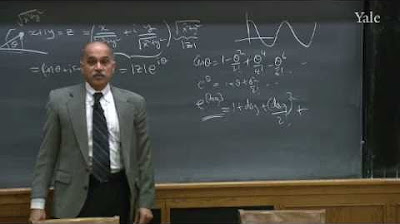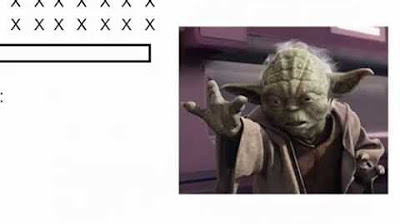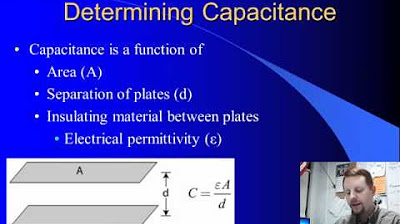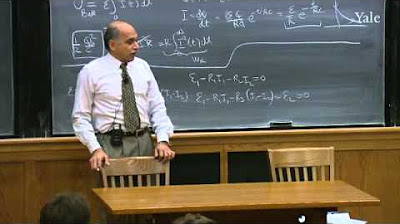What is a Capacitor? (Physics, Electricity)
TLDRThe video script introduces capacitors as crucial components in electric and electronic circuits, explaining their function and operation. It describes how capacitors store electrical energy by accumulating charges on conducting plates, separated by an insulator, and discharge this energy at a controlled rate. The script also highlights the versatility of capacitors in various applications, such as power delivery in short bursts for devices like camera flashes and defibrillators, voltage regulation to create a constant voltage from an AC source, and filtering signals based on frequency in audio production. The explanation is grounded in fundamental concepts like electric potential, voltage, and electric fields, aiming to provide a clear understanding of capacitor behavior in circuits.
Takeaways
- 📌 Capacitors are crucial components in electric and electronic circuits.
- 🔋 A capacitor consists of two conducting plates separated by an insulating material, capable of storing electrical charges and energy.
- ⚡️ Charging a capacitor involves doing work on the charges, which is a transfer of energy, typically provided by a battery.
- 🚀 The energy stored in a capacitor can be delivered to other parts of a circuit at a controlled rate, which is useful for various applications.
- 🔄 Capacitors can help in setting circuit parameters, such as flattening voltage from an AC source to a constant voltage, useful for DC power needs.
- 🎶 They are also vital in filtering electrical signals based on frequency, which is commonly applied in audio and music production.
- 🌀 The ability of a capacitor to pass alternative current depends on the frequency of that current, leading to applications like low pass and high pass filters.
- 🔌 When a capacitor is part of a circuit, it allows current to flow due to the electric field created by the charges on its plates, even through an insulator.
- 📈 The charging and discharging of a capacitor follow exponential curves, demonstrating how the current and voltage across it change over time.
- 🛠️ The rate of charge or discharge of a capacitor is determined by the time constant, which depends on the circuit's resistance and the capacitor's capacitance.
- 🎥 The video aims to provide a fundamental understanding of capacitors' behavior in a circuit, encouraging further exploration of more detailed aspects.
Q & A
What is a capacitor?
-A capacitor is an electric circuit component that consists of two conducting plates separated by a layer of insulating material, used for storing and releasing electrical energy.
How does a capacitor store energy?
-A capacitor stores energy by accumulating electric charges on its conducting plates. When a voltage is applied across the plates, the charges are packed onto the plates, thereby storing electrical energy.
What is the role of a dielectric in a capacitor?
-The dielectric is the insulating material between the conducting plates of a capacitor. It prevents the charges from flowing directly between the plates, allowing the charges to build up and create an electric field, which is essential for the capacitor's operation.
How does a capacitor deliver energy to other parts of a circuit?
-A capacitor can deliver stored energy to other parts of a circuit when needed. It discharges by allowing the charges to flow from one plate to another through the circuit, releasing the stored energy in a controlled manner.
What are some applications of capacitors in controlling the rate of energy delivery?
-Capacitors are used in applications that require a lot of power for a short amount of time, such as camera flashes and defibrillators. They can also be used to flatten voltage in AC sources, transforming the voltage wave into a constant value needed by devices like smartphones.
How do capacitors affect the shape of electrical signals?
-Capacitors can flatten electrical signals by controlling the rate of discharge. They can also filter electrical signals based on their frequency, which is useful in audio and music production for applications like low-pass and high-pass filters.
What is the relationship between charge, voltage, and capacitance in a capacitor?
-The charge (Q) and voltage (V) across a capacitor are directly proportional, with the proportionality constant being the capacitance (C) of the capacitor. This relationship is expressed as Q = C * V.
How does the current in a circuit change as a capacitor charges?
-As a capacitor charges, the current in the circuit decreases exponentially over time. This is because the voltage across the capacitor increases, which according to Ohm's law (V = I * R), results in a decrease in the current (I) through the resistor (R).
What is the time constant in the context of a capacitor?
-The time constant (τ) of a capacitor in a circuit is the product of the circuit's resistance (R) and the capacitance (C) of the capacitor. It determines the rate at which the capacitor charges or discharges.
What happens when a charged capacitor is disconnected from the battery and the circuit is completed?
-When a charged capacitor is disconnected from the battery and the circuit is completed, the capacitor begins to discharge. Charges flow from the upper plate to the lower plate through the resistor, causing the voltage and the current in the circuit to decrease until the capacitor is fully discharged.
Why are capacitors preferred over batteries in certain applications?
-Capacitors are preferred over batteries in applications that require a burst of power for a very short time because they can deliver energy at a rate not limited by chemical reaction kinetics. Additionally, the charge density and voltage on a capacitor's plates can change, unlike in a battery, where they remain constant until depletion.
Outlines
🔋 Introduction to Capacitors and their Fundamentals
This paragraph introduces the concept of capacitors, emphasizing their importance in electronic circuits. A capacitor is described as an electric circuit component made of two conducting plates separated by an insulator. It stores electrical energy when charged and can deliver this energy at a controlled rate, which is crucial for various applications. The paragraph also touches on the applications of capacitors, such as in power-intensive devices like camera flashes and defibrillators, and in voltage regulation and signal filtering in audio production. The importance of understanding electric potential and electric fields for comprehending the behavior of capacitors in a circuit is highlighted, setting the stage for a deeper exploration of the topic.
🌀 Understanding Capacitor Behavior in an Electric Circuit
This paragraph delves into the behavior of a capacitor within an electric circuit. It explains the process of charging a capacitor, where charges flow from a battery to the capacitor's upper plate, creating an electric field and a potential difference. The concept of an insulating material, or dielectric, is introduced, explaining how it affects the electric field and the capacitor's properties. The paragraph also describes the dynamic changes in the circuit's parameters over time, such as the current decrease as the capacitor charges. The discussion includes the relationship between charge, voltage, and current in a capacitor, and introduces the concept of capacitance.
🔄 Capacitor Charging and Discharging Cycle
This paragraph focuses on the charging and discharging cycle of a capacitor. It describes the process of a capacitor reaching a fully charged state, where the voltage across it equals the battery's voltage, leading to a balance in the circuit. The discharging process is also explained, where the capacitor's stored energy is released through a resistor, causing the current to decrease exponentially over time. The paragraph emphasizes the time constant, which dictates the rate of charge or discharge, and its dependence on the circuit's resistance and the capacitor's capacitance. The unique advantages of capacitors over batteries, such as the ability to provide high power in a short time and the variable charge density during charging and discharging, are highlighted.
🎶 Conclusion and Final Thoughts on Capacitors
In conclusion, this paragraph wraps up the discussion on capacitors by summarizing their function and applications. It reiterates the capacitor's role in storing electrical energy and delivering it at a controlled rate, which is beneficial for various applications. The paragraph also encourages viewers to appreciate the fundamental understanding of capacitors provided in the video, suggesting that this knowledge will facilitate further learning. The video ends with a call to action for viewers to engage with the content and look forward to future videos on the topic.
Mindmap
Keywords
💡Capacitor
💡Conducting Plates
💡Insulating Material (Dielectric)
💡Electric Charges
💡Electric Field
💡Electric Potential
💡Energy Storage
💡Discharge
💡Time Constant
💡Capacitance
💡Electric Circuit
Highlights
Capacitors are crucial components in electric and electronic circuits.
A capacitor consists of two conducting plates separated by an insulating layer, allowing it to store electrical charges.
When a capacitor charges, it stores electrical energy that can be delivered elsewhere in the circuit at a controlled rate.
The rate of discharge of a capacitor can be controlled, leading to various applications such as power delivery for short durations in devices like camera flashes and defibrillators.
Capacitors can also smooth out voltage from an AC source, turning it into a constant voltage, akin to a DC source.
The ability of a capacitor to pass alternative current depends on the frequency of that current, which is useful in filtering electrical signals.
In music production, capacitors are used in audio filters to cut off certain frequencies, such as low pass and high pass filters.
Understanding the fundamentals of capacitors is essential for grasping their behavior in a circuit.
Electric potential is the amount of energy a charge of one coulomb would carry if placed at a certain position.
A voltage is the difference in electric potential between two positions.
Capacitors work by allowing charges to flow from a battery towards its upper plate, creating an electric field and allowing current to flow.
The insulating material between the plates of a capacitor, called a dielectric, affects the electric field and the capacitor's properties.
The charging of a capacitor in a circuit is a dynamic process where the current decreases exponentially over time.
Capacitors can be fully charged and then disconnected to store a voltage, which can be used to deliver a burst of power when needed.
The time constant of a capacitor determines the rate of charge or discharge, which depends on the circuit's resistance and the capacitor's capacitance.
Capacitors are not batteries, but their unique characteristics make them suitable for applications that standard batteries are not.
Capacitors provide energy at a rate not limited by chemical reactions, making them ideal for short, high-power applications.
The charge density and voltage on a capacitor's plates change during charging or discharging, unlike in a battery where they remain constant.
Transcripts
5.0 / 5 (0 votes)
Thanks for rating:





